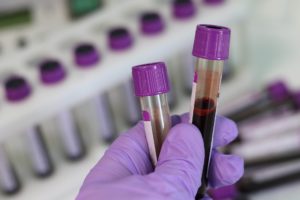
Year: 2018 and 2026
Market size: $8.5 billion and $13.99 billion, respectively
A nurse at a hospital drawing blood to check a patient’s white cell count after treatment. A phlebotomist at a diagnostic laboratory drawing blood to check a patient’s cholesterol levels as part of a routine physical exam. People donating blood at a Red Cross blood drive. Most adults, and some children, are familiar with blood collection products: needles and syringes, blood collection tubes, blood bags, and others. Today’s market size shows total global revenues of blood collection supplies in 2018 and projected for 2026. The increasing incidence of infectious and non-communicable diseases, as well as the rising number of people injured as a result of trauma and accidents, will contribute to growth in this industry.
In 2018, the needles and syringes segment garnered the highest revenue share due to the high demand for surgical procedures and diagnostics. Because of this demand, this segment is expected to maintain its dominance in the future. The market for blood collection tubes and blood bags is expected to experience significant growth through 2026. The growing incidence of disease drives the market for blood testing methods, which in turn drives the market for blood collection tubes. Technological advancements, such as collection tubes that mechanically separate blood cells from plasma, will also drive revenue growth. Blood bags are used for the storage and transfusion of blood. According to the World Health Organization, globally about 117.4 million blood donations are collected each year. Blood donations increased by 7.8 million between 2013 and 2018. In high-income countries, those over the age of 65 account for up to 75% of all transfusions, anemia being the most prevalent of blood disorders in these hospitalized patients. An aging global population will add to this demand.1 Transfusions are also commonly given during cardiovascular surgery, transplant surgery, and when a patient has trauma-related injuries. In addition, they’re used as therapy for tumors and hematological cancers. In low- to middle-income countries, blood transfusions are most commonly used to manage pregnancy-related complications, anemia due to childhood malaria, and trauma-related injuries.The diagnostic segment held the highest revenue share in 2018. The increasing prevalence of chronic and infectious diseases,2 the rising number of screening and diagnostic tests, along with the expanding recognition of the benefits of regular health checkups are contributing to growth in this segment. Because hospitals serve as the primary places for the diagnosis and treatment of diseases, the hospital segment claimed nearly half of revenues in 2018. Diagnostics centers, which had the second-highest revenue share in 2018 at about one-quarter, are expected to gain a substantial share through 2026. These centers offer technologically advanced laboratory devices that allow for faster test results.
By region, North America had the highest revenue share in 2018, followed by Europe. North America has a highly-developed healthcare infrastructure in which innovative and advanced technology is readily adopted. Increasing research and development activities in the region with a focus on clinical research is also driving growth. Several major diagnostic companies have a presence there, such as Abbott Laboratories;3 Medtronic; Bector, Dickinson and Company; NIPRO Medical Corp.; and Haemonatics Corp. Other major global companies in the blood collection product industry include Qiagen N.V., Greiner Holding AG, Sarstedt AG & Co., and FL MEDICAL s.r.l.
1 Globally, the percentage of people over the age of 65 grew from 6% in 1990 to 9% in 2019 and is projected to reach 16% by 2050.
2 Cancer, cardiovascular diseases, sickle cell anemia, hemophilia, malaria, dengue, and yellow fever, to name a few.
3 According to Abbott Laboratories, about 4 billion tests are conducted using its testing platforms every year.
Sources: “Blood Collection Market Size, Share & Trends Analysis Report by Product (Needles & Syringes, Blood Collection Tubes, Blood Bags, Others), by Application (Diagnostics, Treatment), by End-Use, and Segment Forecasts, 2019 – 2026,” Grand View Research Report Summary, November 2019 available online here; “Blood Collection Market Size Worth $13.99 Billion By 2026 | CAGR 6.6%: Grand View Research, Inc.,” CISION PRNewswire, February 13, 2020 available online here; “Blood Transfusion,” World Health Organization, June 10, 2020 available online here; World Population Ageing 2019 Highlights, United Nations Department of Economic and Social Affairs, 2019 available online here.
Image source: Belova59, “laboratory-medical-medicine-hand-3827736,” Pixabay, November 25, 2018 available online here.
